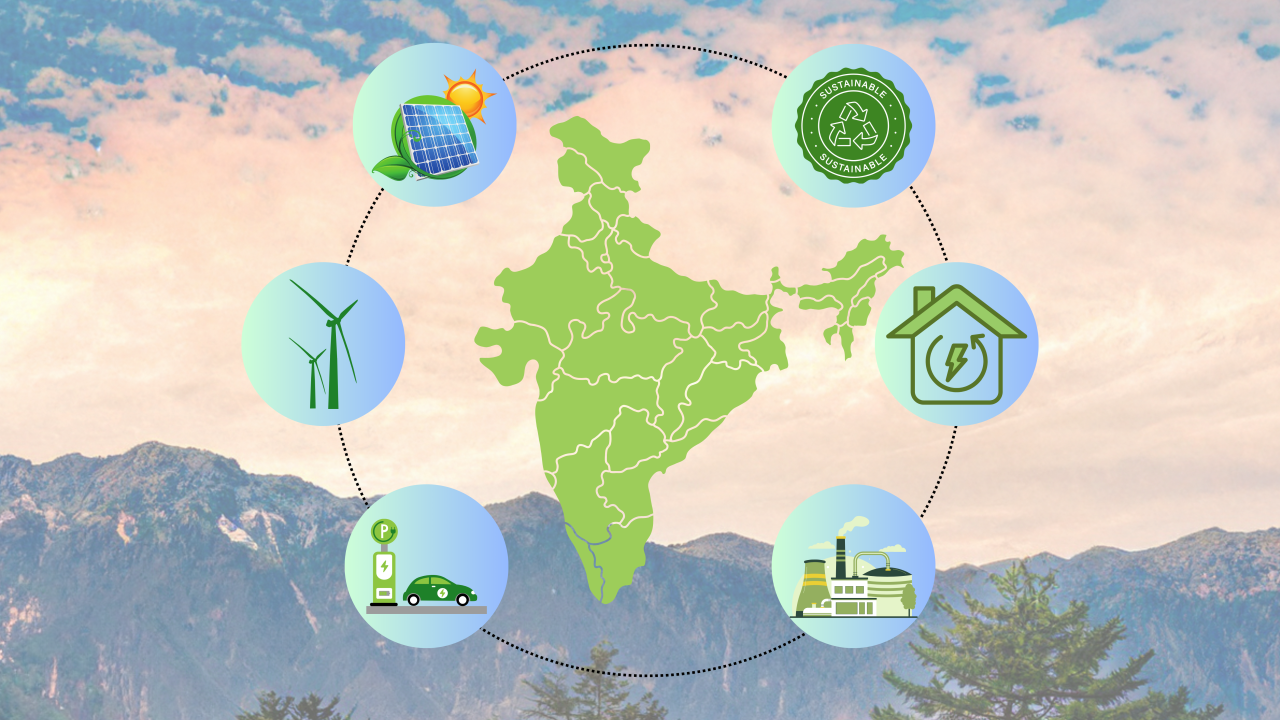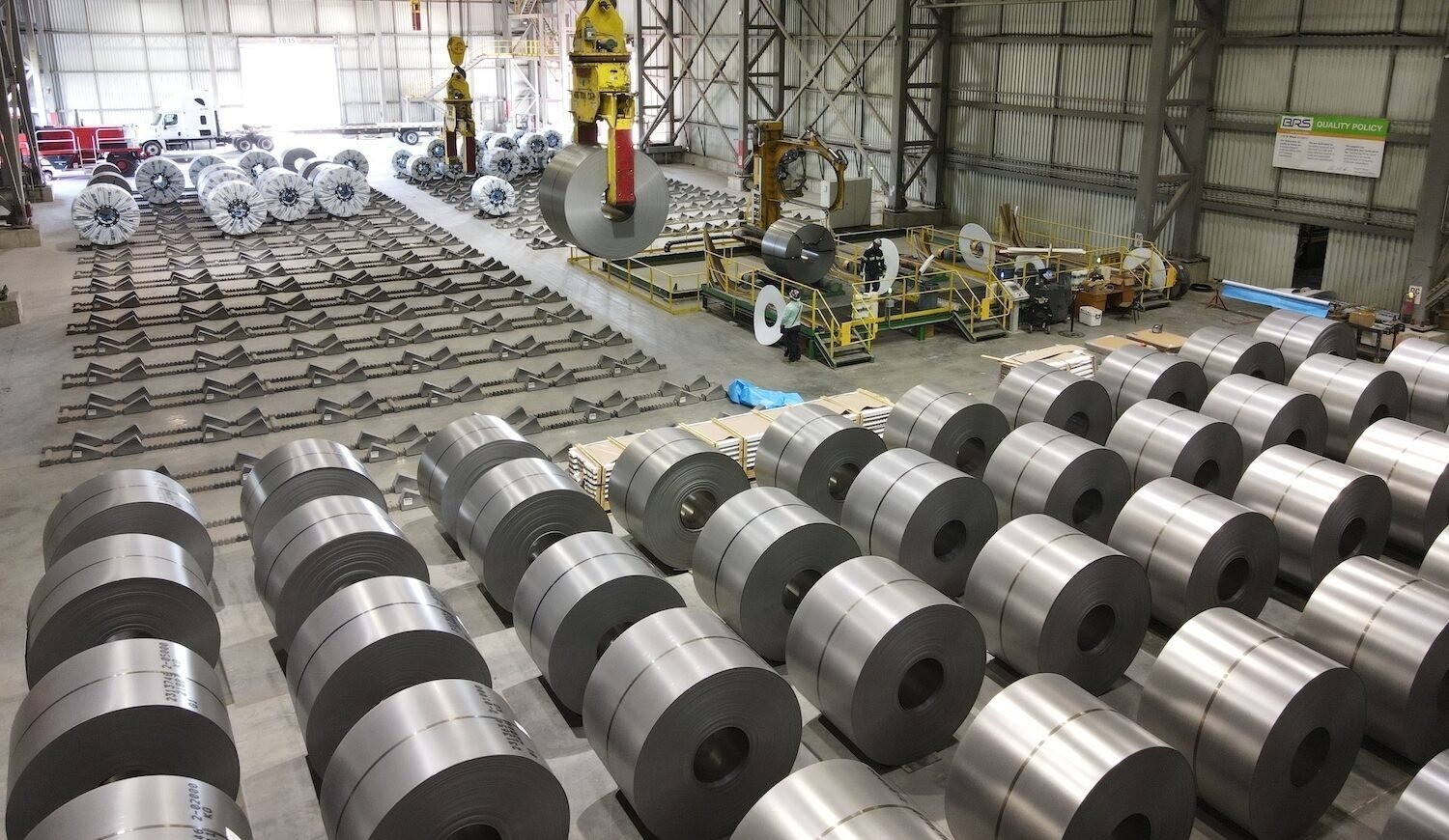
A net-zero economy depends on both extensive electrical grid transformation alongside mass use of hydrogen as an essential industrial fuel. The increasing power requirements of India lead to nuclear energy expansion with simultaneous development of solar power and wind power and hydroelectric facilities. Nuclear power gives stable base load generation yet does not provide enough flexibility to adjust output according to peak demand requirements as solar and wind energy does. High-cost nuclear plant flexibility is inefficient because the production of hydrogen through electrolysers works best when utilizing surplus electricity. The produced hydrogen enables industrial operations to reduce their fossil fuel consumption. The model requires two policy changes which define low-carbon hydrogen to include nuclear energy alongside green hydrogen and develop combined hydrogen generation and electricity storage systems for cost-effective decarbonization.
Context:
-
Power Expansion: The increasing power requirements throughout the nation will dramatically increase after India electrifies its economy for zero-carbon operations.
-
Hydrogen role: The industrial applications of hydrogen make it essential because it functions as a fossil fuel alternative during steel production and fertilizer manufacturing.
-
India’s aim: The Indian government aims to establish 100 GW of nuclear capacity along with planned new small reactor projects conducted by NPCIL towards 2047.
-
Hydrogen Production: The generation of hydrogen demonstrates effective capabilities for flexible power use and scalability when storing electricity.
Key Points:
-
Hydrogen in Industrial Transformation:
-
Replaces carbon in steel and natural gas in ammonia production.
-
The technology provides sustainable replacement options to industrial plants that find it difficult to reduce their emissions.
-
-
Expanding India's Nuclear Capacity:
-
The nuclear power company NPCIL is progressing with developments of 700 MW PHWR units and 220 MW Bharat Small Reactor systems.
-
The government targets 26 PHWR units while developing nuclear partnerships with Indian Railways and other industries.
-
Nuclear power operators identify it as a dependable facility for producing base power which delivers dependable energy security benefits.
-
-
Challenges with Nuclear Flexibility:
-
The high initial expenses coupled with limited profitability make nuclear plants ineffective when they operate at sub-maximum levels.
-
The technology limitations in load-following functionality make it impossible to perform flexing operation.
-
The surplus electricity supply should be redirected for hydrogen production through the alternative approach.
-
-
Hydrogen as a Grid-Balancing Solution:
-
The operation of electrolysers works with wind/solar energy that exceeds demand.
-
The production of hydrogens through electrolysis does not enable its conversion back into electricity since industries employ it directly.
-
The approach reduces both power storage requirements for batteries and unnecessary restriction of renewable energy production.
-
-
Green vs. Low-Carbon Hydrogen Taxonomy:
-
Current definition excludes nuclear-based hydrogen.
-
A proposal suggests the redefinition of green hydrogen to low-carbon hydrogen through established emission limits (≤2 kg CO₂/kg H₂).
-
The new definition secures nuclear energy as a part of clean hydrogen strategies.
-
-
Synergy Between Hydrogen and Electricity Storage:
-
The current industry separation prevents cost-efficiency from being achieved.
-
Research evidence confirms the combination of batteries with hydrogen systems creates financial benefits while enhancing operational performance.
-
A complete assessment method leads to better results for renewable integration along with industrial decarbonization.
-
About Hydrogen Energy
What is Hydrogen Energy?
-
The zero-emission fuel functions inside fuel cells yet it also produces heat or electricity when burned.
-
Non-toxic, odorless, colorless, and highly energy-dense.
-
The hydrogen technology exists as an acceptable replacement option for traditional fossil fuels in different industrial applications.
Hydrogen Energy in India:
-
Formation of National Hydrogen Energy Board in 2003.
-
The Hydrogen Energy Road Map established its main emphasis on power generation and transportation systems during this year (2006).
-
India became part of Mission Innovation Challenge to dismantle the worldwide challenges in hydrogen production.
-
The government targets to generate 75% of its hydrogen supply through renewable resources by the year 2050.
-
Ongoing R&D in production, storage, and application.
Benefits of Hydrogen Energy:
-
Environmental: Zero CO₂ emission in Green Hydrogen.
-
By implementing hydrogen energy systems India can decrease its reliance on fossil fuels in foreign imports while securing its energy needs.
-
Industrial Applications: Decarbonises sectors like steel and fertilizer.
-
The energy source possesses adaptability since it functions together with grid systems and renewable energy overproduction and storage facilities.
Conclusion
India’s path to a net-zero economy hinges on strategic alignment of low-carbon technologies. The upcoming power demand boom requires a mixed energy system of nuclear sources and solar power and wind sources and hydroelectric power backed up by intelligent grid technology. The efficient conversion of nuclear power excess into hydrogen production represents an advanced and practical energy outcome instead of inefficient plant transitions. The implementation of a new hydrogen policy structure which supports low-carbon hydrogen generation methods and combines this production with electricity storage systems will produce substantial economic and environmental advantages. The created policy frameworks will boost Indian industrial competitiveness and enhance its role as a powerhouse in global clean energy transitions.



 Unlocking India’s $25 Billion Export Potential in Hand and Power Tools Sector: NITI Aayog’s Strategi
Unlocking India’s $25 Billion Export Potential in Hand and Power Tools Sector: NITI Aayog’s Strategi How Make in India is Transforming India's Global Pharmaceutical Footprint
How Make in India is Transforming India's Global Pharmaceutical Footprint The Radical and Enduring Legacy of Shivaji Maharaj – A Pioneer of Governance and Military Strategy
The Radical and Enduring Legacy of Shivaji Maharaj – A Pioneer of Governance and Military Strategy Sarhul Festival: A Celebration of Nature and Adivasi New Year
Sarhul Festival: A Celebration of Nature and Adivasi New Year From Farm to Retail: Make in India’s Food Processing Revolution
From Farm to Retail: Make in India’s Food Processing Revolution ADB-Funded SMILE Program to Enhance India's Logistics Efficiency
ADB-Funded SMILE Program to Enhance India's Logistics Efficiency India Achieves Significant Milestone in Global Tea Industry, Becomes World’s 2nd-Largest Exporter of
India Achieves Significant Milestone in Global Tea Industry, Becomes World’s 2nd-Largest Exporter of Green Iron: A Billion-Dollar Opportunity and the Challenge of Winning It
Green Iron: A Billion-Dollar Opportunity and the Challenge of Winning It JSW Steel Becomes the World’s Most Valuable Steelmaker with $30 Billion Market Cap
JSW Steel Becomes the World’s Most Valuable Steelmaker with $30 Billion Market Cap






